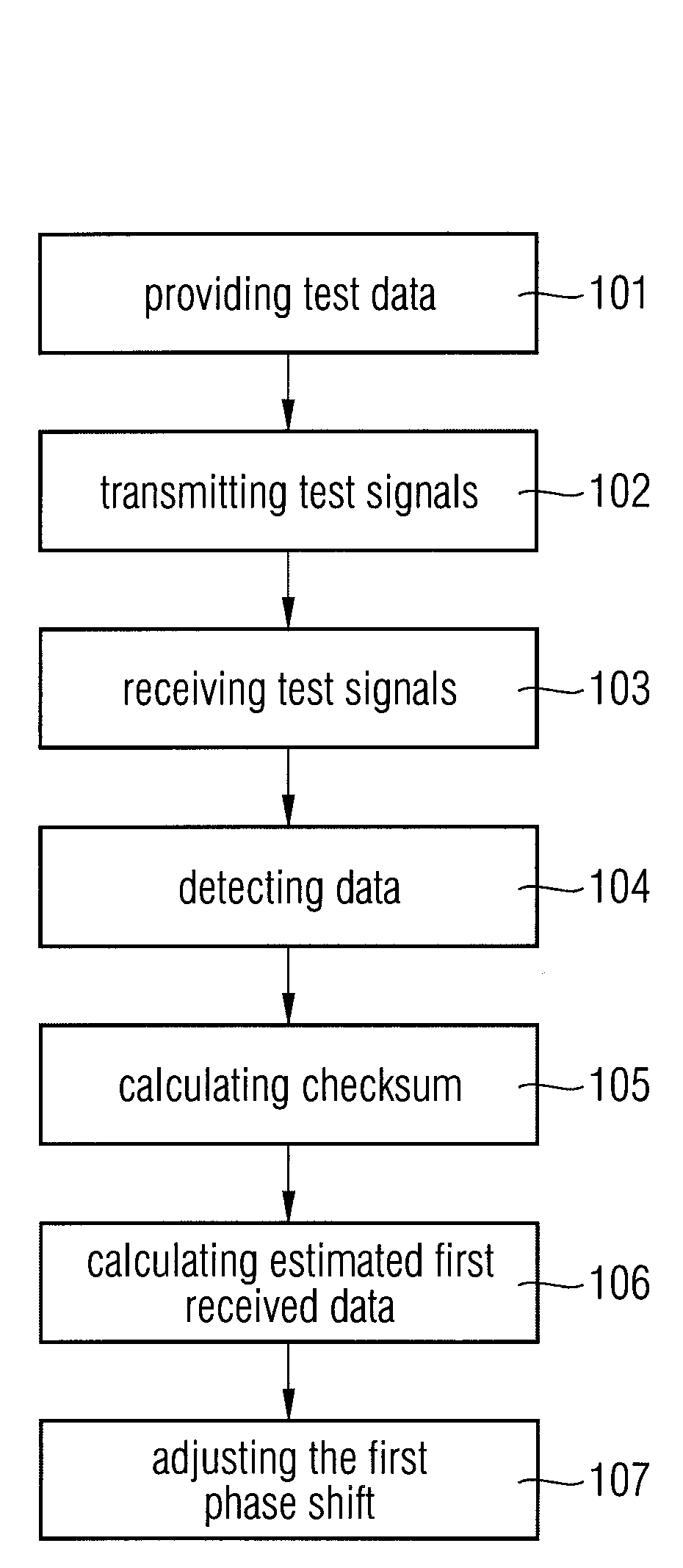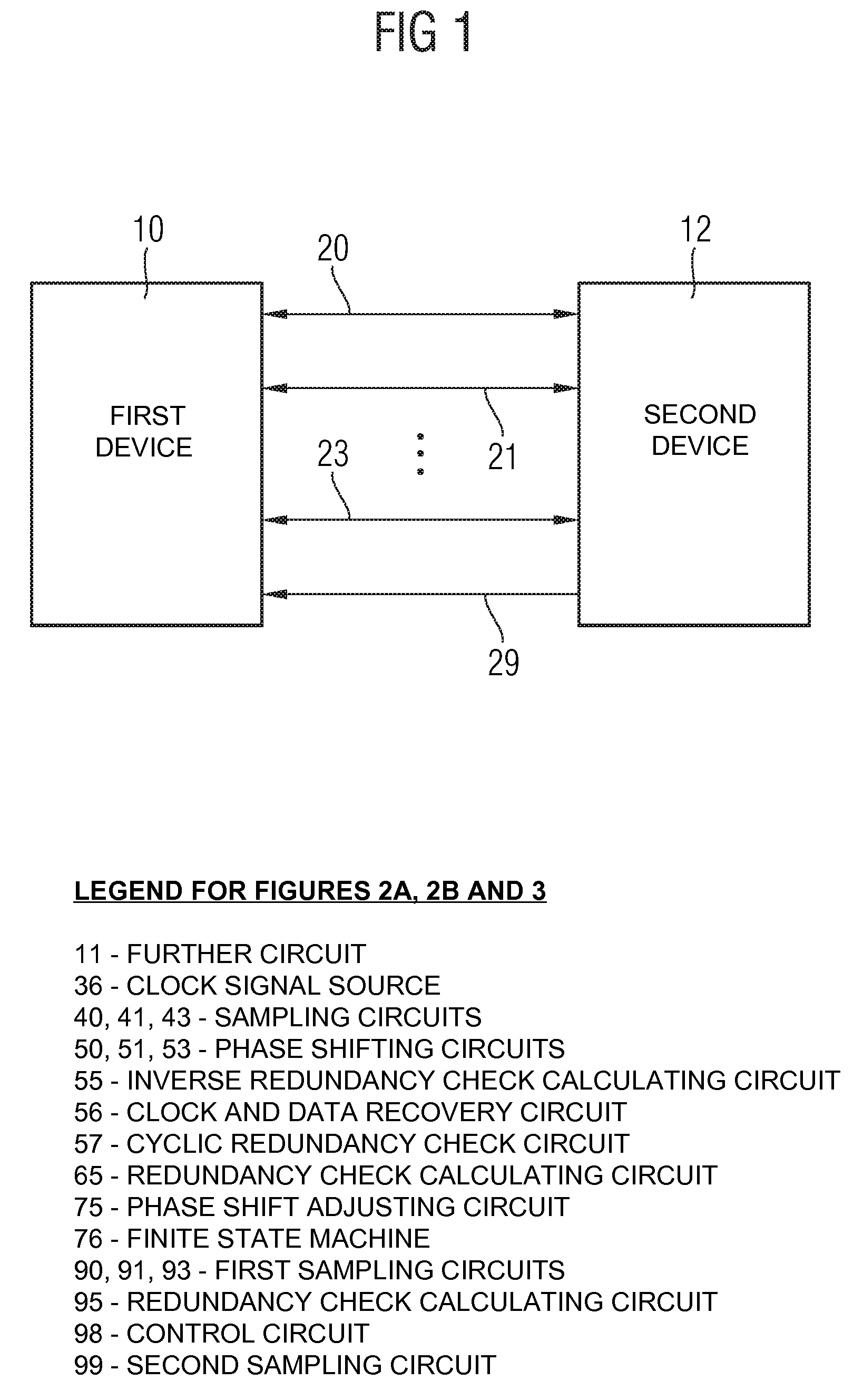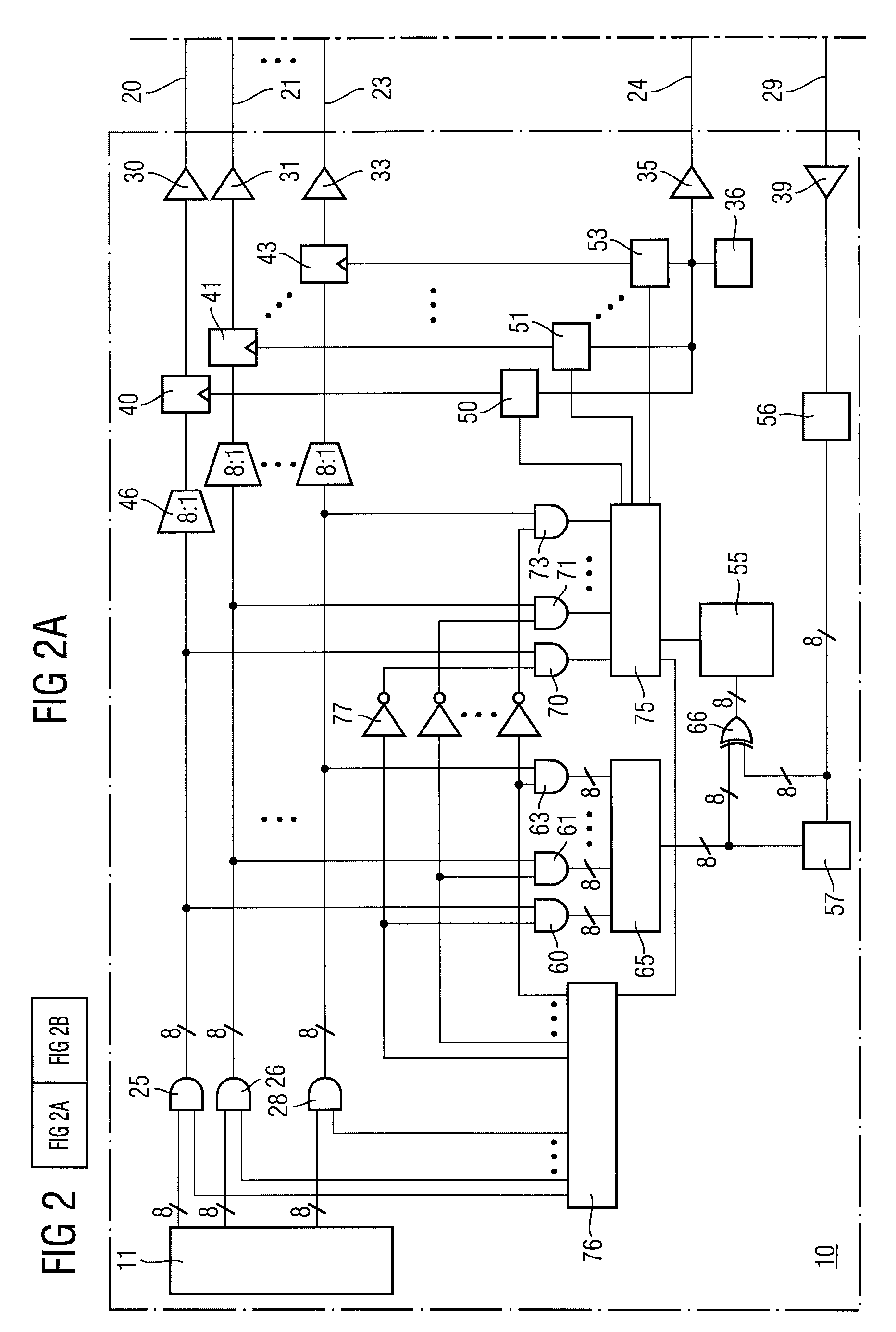Phase shift adjusting method and circuit
a phase shift and adjustment method technology, applied in the field of phase shift adjustment method and circuit, can solve the problems of increasing the error rate in data detection at the receiver, unable to provide any mechanism for present or already projected future dram standards, and serious challenge in timing of signals relative to the clock. , to achieve the effect of improving memory controller and improving memory devi
- Summary
- Abstract
- Description
- Claims
- Application Information
AI Technical Summary
Benefits of technology
Problems solved by technology
Method used
Image
Examples
Embodiment Construction
[0018]FIG. 1 is a schematic flow chart of a first device 10 and a second device 12 wherein both the first and the second devices 10, 12 are preferably microelectronic devices like memory controllers or memory devices. The first and second devices 10, 12 are connected to each other via a plurality of data signal lines 20, 21, 23 and an error detecting code signal line 29. The data signal lines 20, 21, 23 are configured to transmit data signals from the first device 10 to the second device 12 and / or from the second device 12 to the first device 10. The error detecting code signal line is configured to transmit an error detecting code signal from the second device 12 to the first device 10. The first and second devices 10, 12 may be connected to each other via a number of further data, address, command or other signal lines which are not displayed in FIG. 1. In particular, the first and second devices 10, 12 are preferably connected via a clock signal line transmitting a clock signal f...
PUM
 Login to View More
Login to View More Abstract
Description
Claims
Application Information
 Login to View More
Login to View More - R&D
- Intellectual Property
- Life Sciences
- Materials
- Tech Scout
- Unparalleled Data Quality
- Higher Quality Content
- 60% Fewer Hallucinations
Browse by: Latest US Patents, China's latest patents, Technical Efficacy Thesaurus, Application Domain, Technology Topic, Popular Technical Reports.
© 2025 PatSnap. All rights reserved.Legal|Privacy policy|Modern Slavery Act Transparency Statement|Sitemap|About US| Contact US: help@patsnap.com



